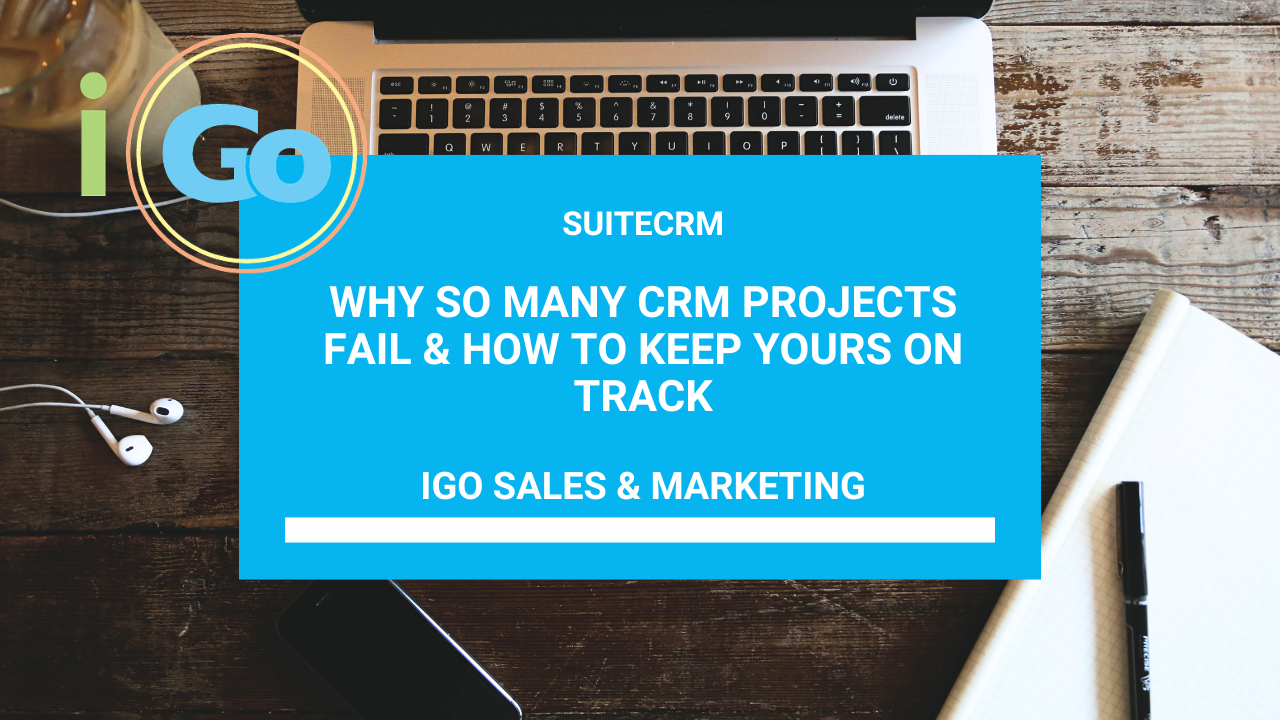Everyone loves the idea of “free.” Free software. Free flexibility. Free from vendor lock-in.
That’s the allure of SuiteCRM — you own it, control it, and avoid the hefty monthly fees.
But in real life, too many CRM projects follow a familiar arc: optimism turns into frustration, and before long, someone says, “Maybe we just need a new CRM.”
Here’s the hard truth: it’s rarely the software that fails. It’s the process behind it.
A Story That Still Sticks With Me
I was brought into a SuiteCRM project a few years ago — late in the game. The IT team had done an incredible job. They’d built custom modules, connected everything together, even integrated the “installer” team’s workflows with the Cases module and calendar, as well as email and SMS notification for installs. They worked weekends to make it all perfect. Technically, it was one of the best SuiteCRM builds I’d seen.
By the time I joined, everything was live. My role was to help with user adoption and use cases basically, to work with the salespeople. Or, as IT put it: “We’ve done our part. Now you need to get them to use it.”
At that point, the board was asking hard questions:
“Why aren’t we hitting our sales targets?”
The sales team’s answer?
“The CRM doesn’t have the features we need to hit our sales targets.”
Sound familiar?
So we started training, setting up accountability workflows, and trying to build consistency. But every week, it was the same scramble: sales chasing numbers, management chasing reports, and IT caught in the middle.
The board wanted dashboards, funnels, and progress updates — all understandable requests. But the more reports they asked for, the less time anyone had to actually sell.
The Sales Manager Who Never Stood a Chance
About halfway through my engagement, the Sales Manager resigned.
Honestly, I wasn’t surprised. Her job had become 100% reporting — endless data pulls, PowerPoints, and board updates. She was so buried in spreadsheets that she had no time left to coach her team, refine processes, or actually manage sales performance.
That’s the moment it clicked for me: this wasn’t a CRM problem. It was a leadership alignment problem.
The organization had incredible people — but everyone was reacting instead of improving. The CRM was technically flawless but functionally disconnected. It had become a mirror, reflecting the lack of process clarity.
And then came the predictable next step.
Leadership decided the CRM “just wasn’t working.”
They replaced SuiteCRM with a shiny commercial platform — $100,000+ implementation, plus tens of thousands per year in licensing fees.
To this day, I’d bet their sales results haven’t changed.
They didn’t need a new CRM. They needed a real sales process.
The Three Voices in Every CRM Project
Every CRM project has three competing voices — and unless they’re aligned, failure is baked in from day one.
1. IT: “We built exactly what they asked for.”
IT loves SuiteCRM because it’s open and customizable. They can integrate anything. They deliver perfectly built systems but without user buy-in, even the best setup sits unused.
IT measures success in technical completion, not adoption.
2. Sales: “The CRM doesn’t have what we need.”
Salespeople are under constant pressure. When the pipeline dries up, the blame shifts to the tool.
They say, “It’s missing the fields we need,” or “It’s too complicated,” but what’s really missing is a shared process for how leads are tracked, followed up, and measured.
Without clarity, CRM becomes the scapegoat.
3. Leadership: “Why aren’t we hitting sales targets?”
The CEO or board just wants results.
They see CRM as a performance dashboard — not a behavior-shaping tool. When results lag, they push for more data and reports, which creates even more administrative work.
Eventually, frustration boils over and leadership concludes, “We just need a better system.”
But replacing the CRM doesn’t fix the process. It just resets the clock.
The Real Problem: Misalignment, Not Software
SuiteCRM (or any CRM) is neutral — it’s just a mirror.
If your sales process is messy, your CRM will show you that mess in vivid color.
When IT builds without sales input, when sales use the CRM only under pressure, and when leadership treats it like a report generator instead of a management tool, failure is inevitable.
The problem isn’t features or functions — it’s misalignment between people, process, and purpose.
A CRM doesn’t fix broken communication. It just makes it visible.
What Actually Works
Over the years, I’ve learned that successful CRM projects share five traits.
They’re not technical — they’re cultural.
1. Start with Discovery
Before you touch the software, map how your sales process actually works.
Where do leads come from? How are follow-ups tracked? Who owns the next step?
If you can’t answer these questions clearly, you’re not ready for a CRM.
2. Make Sales a Partner, Not a Passenger
Sales teams need to help shape the workflows, fields, and reports they’ll use daily.
If they feel ownership in the design, adoption skyrockets.
3. Establish CRM Ownership
Someone inside your organization must own the CRM, not just IT.
That person (often a Sales Ops or Marketing Ops lead) ensures data consistency, manages updates, and keeps training continuous.
4. Focus on Coaching, Not Reporting
A Sales Manager’s job isn’t to make dashboards — it’s to build people.
Shift the focus from reporting activity to coaching performance.
5. Iterate
CRM isn’t a one-time setup. It’s a living system.
Start small, launch fast, collect feedback, and improve weekly.
Success is an evolution, not an event.
The Big Lesson: Great CRMs Start with Great Sales Processes
You can’t automate what doesn’t exist.
A great CRM won’t fix a poor sales process — it’ll just document it in more detail.
That’s why every successful CRM implementation I’ve seen starts with one thing: a clearly defined, repeatable sales process.
Before you invest in CRM customization, reports, or dashboards, make sure you’ve built a foundation of:
- Defined lead stages
- Clear responsibilities
- Consistent follow-up habits
- A shared understanding of what “qualified” really means
Only then does CRM become the tool it was meant to be — a sales engine, not a report generator.
How I Can Help: Fractional Sales Management
If this story feels familiar, your problem might not be technology — it might be leadership bandwidth.
That’s where my Fractional Sales Management service comes in.
I work directly with your team to build:
- A repeatable sales process
- Accountability structures
- Sales meeting rhythms and KPIs that drive results
- And finally — a CRM setup that supports, not replaces, that process
Because the truth is simple:
CRM success doesn’t start with software. It starts with strategy.
If your CRM feels like it’s running you instead of empowering you, maybe it’s time for a fresh look at the process — not the platform.

